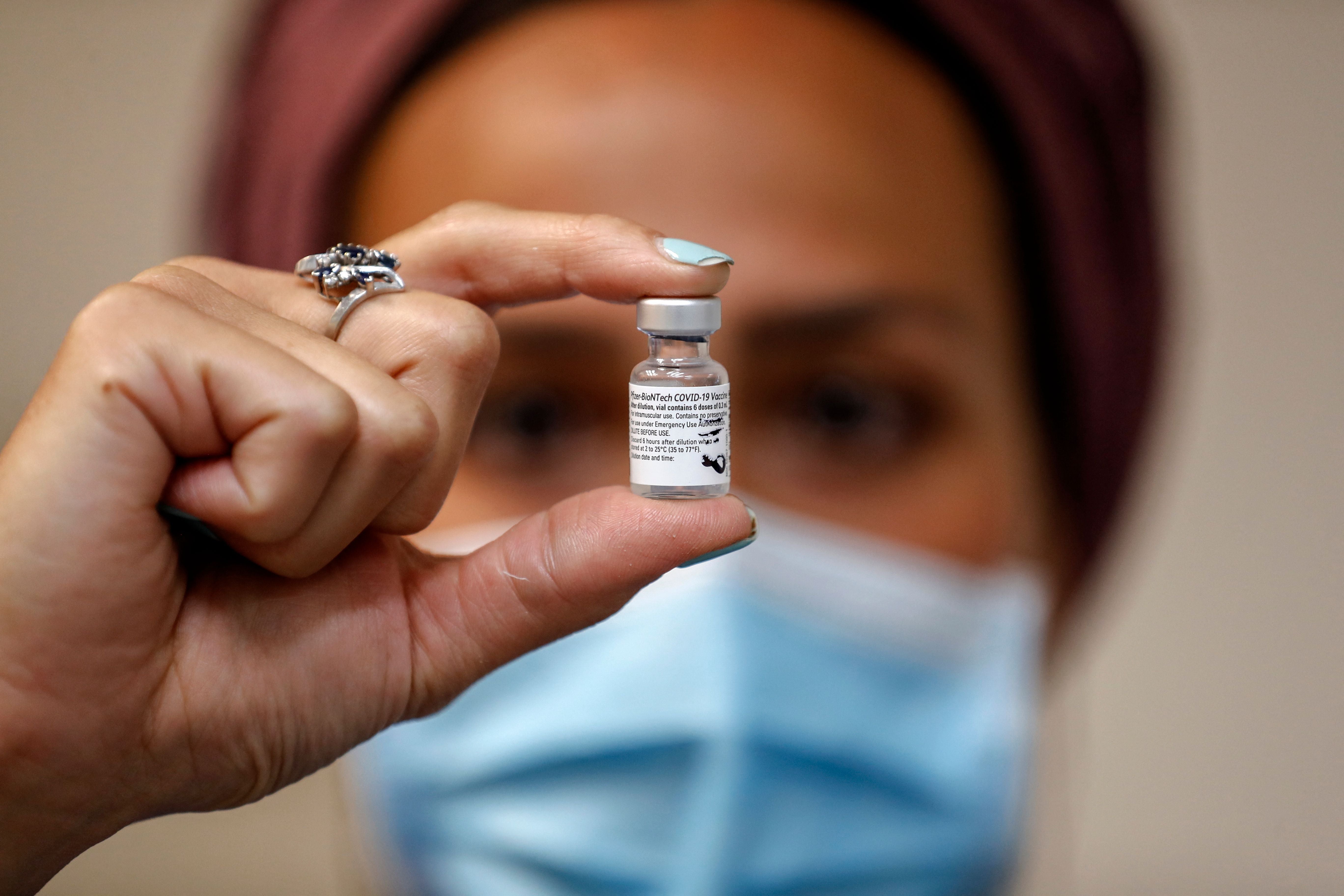
Scientists are split on a US Food and Drug Administration (FDA) proposal to update COVID-19 vaccines once a year, similar to the agency’s approach to updating influenza vaccines. At a meeting of the FDA’s vaccine advisory panel on 26 January, some researchers argued that the plan would help to simplify the country’s complex COVID-19 immunization schedule and might boost uptake as a result.
But others were less convinced that the jab should be updated each US autumn — or whether healthy adults should be urged to receive an annual COVID-19 jab at all. Angela Shen, a vaccine specialist at Children’s Hospital of Philadelphia in Pennsylvania, says the proposal, released on Monday, is “conceptually not a bad idea”. But she questions whether the data support updating the vaccine composition once a year, because SARS-CoV-2 spawns new variants at a different rate than does influenza. “Just scratching out ‘flu’ and replacing it with ‘COVID’ on all the documents might not work, because COVID is not the flu,” says Shen, who is a former member of a US Centers for Disease Control and Prevention (CDC) advisory panel on immunization practices.
The timeline for updating flu jabs is based on the well-documented seasonal pattern for the emergence of new strains: selection of strains for Northern Hemisphere vaccines is based in part on which versions spread widely during the previous Southern Hemisphere winter. Although there is some evidence that SARS-CoV-2 also spreads seasonally, that pattern is not as predictable as influenza’s.
“We understand the seasonality of flu, and know exactly when to vaccinate for optimal effect,” says Luciana Borio, a former FDA acting chief scientist, who is now a global-health specialist at the Council on Foreign Relations in New York City. But “we simply do not know whether people need to be vaccinated every year or less frequently to be protected from severe COVID”.
Additionally, SARS-CoV-2 variants don’t sweep the world as uniformly as influenza strains do, which means it will be difficult to coordinate the composition of a COVID-19 jab globally. Bruce Gellin, a global-health specialist at the Rockefeller Foundation’s Pandemic Prevention Initiative in New York City, asked at the meeting if the annual-update proposal would implicitly require that other countries follow the FDA’s decisions. Bill Falstich, vice-president for global supply chain at vaccine-manufacturer Pfizer, which is based in New York City, responded, “Not necessarily.”
Right timing?
Although offering COVID-19 vaccines alongside influenza jabs could boost uptake, Gellin also questioned the plan to offer the updated jab in the US autumn. Throughout the pandemic, the United States has seen a late-summer COVID-19 wave in addition to a larger winter surge, which could suggest that it’s better to give the vaccine earlier in the year, he says.
But administering the jab before the winter surge could avert a rush of hospitalizations, noted Peter Marks, head of the FDA’s Center for Biologics Evaluation and Research in Silver Spring, Maryland. In winter, clinics are swamped with people infected with influenza and respiratory syncytial virus (RSV), which led to some US hospitals nearing capacity this season.
Harmonized composition
At the same meeting, the vaccine advisory panel unanimously endorsed the agency’s proposal to adopt a single COVID-19 vaccination composition for primary and booster doses. Currently, people in the United States complete a primary COVID-19 vaccination series — at least two doses of the vaccines made by Pfizer–BioNTech, Moderna or Novavax, or a single jab of a Johnson & Johnson vaccine — all of which should then be followed by a booster two months later. For the booster, Pfizer–BioNTech and Moderna at first offered an extra dose of its original vaccine, but the companies now offer only ‘bivalent’ boosters, which include more than one strain of SARS-CoV-2.
Uptake of bivalent boosters has been low in the United States: about 15% of eligible people have received a two-strain jab. Some experts say that is because many people have received a mixture of vaccines, which has led to confusion over which type of booster they should get and when.
“We desperately need to simplify the vaccination schedule,” says Megan Ranney, a physician and public-health specialist at Brown University in Providence, Rhode Island. “If we’re going to sustain our ability to vaccinate the country, we have to move toward a more standardized schedule, from a behavioural-science point of view.” The proposal to adopt a single vaccine composition for the whole series would alleviate some of that confusion, and it might boost vaccine uptake because jabs could be offered alongside annual influenza vaccines, she adds. “These changes make a lot of sense.”
Future decision
Standardizing vaccine composition for the primary and booster series would probably mean that the bivalent vaccine would become the main formulation for people who haven’t yet had a primary series.
The bivalent boosters currently used in the United States, the United Kingdom and elsewhere target both the ‘ancestral’ SARS-CoV-2 strain circulating at the start of the pandemic and an Omicron strain. CDC data shared at the advisory meeting show that people aged 5 and above who received just a single-strain booster are twice as likely to die from COVID-19 as those who get a bivalent booster. However, any booster still reduces overall chances of death from COVID-19.
Some meeting panellists had concerns about the decision to use a bivalent formulation, rather than an updated single-strain one, in future vaccines. Scientists noted that there are few data on the effectiveness of bivalent vaccines when given as a primary series — particularly in young children, who make up a large proportion of the people now receiving a primary series in the United States. And some studies have hinted that including the ancestral strain might blunt the vaccine’s effectiveness against Omicron, because of a phenomenon called immune imprinting.
Marks noted at the meeting that the advisory panel would convene again in May or June to discuss whether a formulation change is warranted, and that the panel would then discuss whether an updated vaccine should include just one strain of SARS-CoV-2, or multiple strains. This is an important scientific question, says Ranney — but in the meantime, “especially if you’re older or have chronic conditions, a booster is better than no booster when you’re in the middle of a surge”.
This article is reproduced with permission and was first published on January 27 2022.


